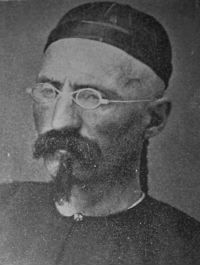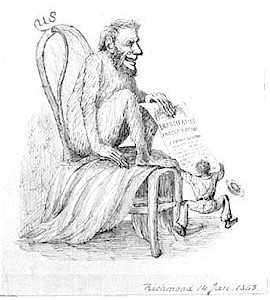Richard Conniff's Blog, page 116
October 10, 2010
The Species Seekers Quiz: Discovering the Golden Monkey
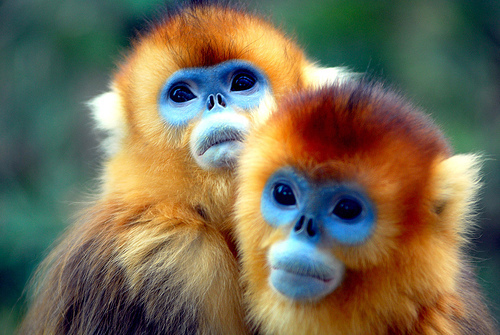 Who discovered the golden monkey?
Who discovered the golden monkey?
1. Henri Milne-Edwards
2. Alfred Russell Wallace
3. Patrick Manson
4. Pére Armand David
And the answer is
The golden monkey was familiar to Europeans from images in Chinese paintings and porcelains, but according to David's translator Helen M. Fox, it was "so odd that it was thought to be an imaginary animal." It had a small bluish-white face surrounded by a fringe of flame red hair, and whereas all other known primates were tropical, these lichen-eating monkeys lived, David wrote, "in trees in the highest mountains, now white with snow." The golden monkey became Rhinopithecus roxellana. The French naturalist Henri Milne-Edwards chose the species name to commemorate the Ukrainian wife of an Ottoman Turkish sultan, Suleiman the Magnificent, because monkey and wife both had distinctive up-turned noses. To some, the discovery and naming of these species may seem like an act of cultural appropriation. But read why that's not entirely so, in The Species Seekers: Heroes, Fools, and the Mad Pursuit of Life on Earth.








October 9, 2010
The Species Seekers Quiz: Name "The Original Gorilla"
Who got called "the original gorilla?"
1. The charming but hirsute explorer Paul Du Chaillu.
2. American President Abraham Lincoln
3. The missionary in West Africa Thomas S. Savage
4. The fiercely competitive British anatomist Richard Owen
And the answer is
The Rev. Thomas S. Savage and anatomist Jeffries Wyman discovered the new species "gorilla," in 1847. But the species remained largely unknown until 1861, when Paul Du Chaillu brought back the first eye-witness accounts of gorilla behavior in the wild, along with skins and bones of more than 20 gorillas. News of Du Chaillu's adventures spread worldwide. In the U. S., Secretary of War Edwin M. Stanton called President Abraham Lincoln "the original gorilla," and joked that Du Chaillu was a fool to go to Africa for what he could easily have found in Springfield, Illinois. Although Stanton was often at odds with the President (having first called him a "long-armed ape" while working with him on the McCormick-Manney Reaper trial in 1855), Lincoln refused to replace him. After Lincoln's death, Stanton stated, "There lies the most perfect ruler of men the world has ever seen. Now he belongs to the ages."








The Species Seekers Quiz: Name "The Original Gorilla"
Who got called "the original gorilla?"
1. The charming but hirsute explorer Paul Du Chaillu.
2. American President Abraham Lincoln
3. The missionary in West Africa Thomas S. Savage
4. The fiercely competitive British anatomist Richard Owen
And the answer is
The Rev. Thomas S. Savage and anatomist Jeffries Wyman discovered the new species "gorilla," in 1847. But the species remained largely unknown until 1861, when Paul Du Chaillu brought back the first eye-witness accounts of gorilla behavior in the wild, along with skins and bones of more than 20 gorillas. News of Du Chaillu's adventures spread worldwide. In the U. S., Secretary of War Edwin M. Stanton called President Abraham Lincoln "the original gorilla," and joked that Du Chaillu was a fool to go to Africa for what he could easily have found in Springfield, Illinois. Although Stanton was often at odds with the President (having first called him a "long-armed ape" while working with him on the McCormick-Manney Reaper trial in 1855), Lincoln refused to replace him. After Lincoln's death, Stanton stated, "There lies the most perfect ruler of men the world has ever seen. Now he belongs to the ages."








October 6, 2010
Amazing New Jersey: A Screech Owl in Cedar Grove

Cedar Grove's Finest (by Pete Wolf)
Last year in the New York Times, I wrote a piece about how you don't have to go anywhere to see animals do interesting stuff–you just have to go outside.
So I was delighted when my grade school pal Pete Wolf sent me this photograph from his backyard in Cedar Grove, NJ–a suburb of New York which I suspect no longer has the cedars for which it was named. Pete and wife Daphne's yard is maybe 50 feet wide, with other yards and houses all around it. It isn't the great American wilderness. Here's his account of screech owl basics:
The eastern screech owl covers a wider swath of North America than suggested by its effete, right-of-the-Mississippi-sounding name. Megascops asio ranges from eastern Montana and the Great Lakes down to the Gulf Coas, and from Florida around to northeastern Mexico. It comes in either a gray or a red/brown form.
Monogamous and nonmigratory, it prefers to breed in forests and grassland. Its average output of five white eggs often winds up on natural sawdust below a tree cavity or abandoned woodpecker hole. It searches for food is in-flight, targeting mice, rats, chipmunks, squirrels, shrews, bats and moles.
Its call "is an eerie, mellow, muted trill given during mating and nesting seasons," according to Wild Birds Unlimited Nature Shop. "Each call lasts 2 to 3 seconds and contains about 35 notes. Also gives a descending whinny call; female may bark or hoot when defending the nest."
Adults range from 6.3-9.8 inches in length. They"ll happily squat in manmade nesting boxes. They're normally nocturnal, but check out this video emerging midday to fluff itself up:
The best study of the eastern screech owl comes from biologist Frederick R. Gehlbach who devoted 25 years to these animals, focusing on suburban and rural study plots in Central Texas: Eastern Screech Owl: Life History, Ecology, and Behavior in the Suburbs and Countryside (W. L. Moody Jr. Natural History Series).








September 29, 2010
Officer Langur Puts on His Bad Cop Face
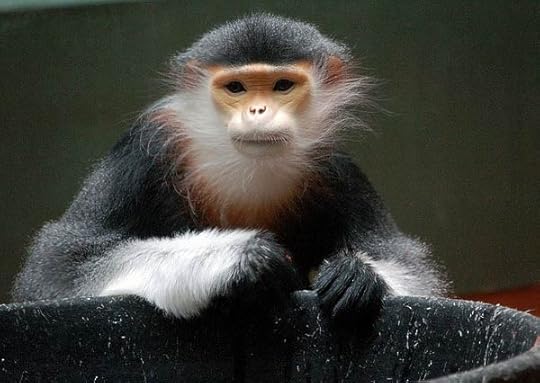 You have love the idea that India is using a security squad of langur monkeys to protect facilities at the Commonwealth Games. And, geez, they're starting at the boxing and hockey facilities, which means that if the langurs have any brains at all (and they do), the competitors may not be able to enter the building.
You have love the idea that India is using a security squad of langur monkeys to protect facilities at the Commonwealth Games. And, geez, they're starting at the boxing and hockey facilities, which means that if the langurs have any brains at all (and they do), the competitors may not be able to enter the building.
Read more in The Daily Nation.








September 25, 2010
Oh, Kvakk!

A black-crowned night heron seeking breakfast (© John Skillin)
I love the black-crowned night heron partly because it looks like a nineteenth-century school master patrolling the classroom and preparing to seize some miscreant by the scruff of the neck.
So I was delighted this past spring when a pair of them nested in the woods behind my next door neighbor's house on the Connecticut Coast. It took me a while to figure out what was going on.
At first, I just heard that strange shrill dinosaur-colony sound ringing out from the trees: "kvakk .." And again, after a long pause, "kvakk …"
Then one day a fledgling came tumbling out onto our lawn.
I am grateful to family friend John Skillin for the photograph above, of a heron on the dock near his home in New Jersey. And I am also grateful to a couple of Turkish researchers for their recent study with this choice description of wild, hot, heron sex:
From the beginning till the end of the nest-building process, the male keeps
performing its courtship display. This display is in the
form of providing the female with material for building
the nest. The male stands close to the nest and, protruding
its neck and displaying its feathers, gets really slowly
closer to the branch on which the female rests. It slowly
moves its neck up and down (Figure 2). In the meantime
it utters a guttural "kvakk" "kvakk" sound to attract the
attention of the female. The female responds with a
similar sound. Mating takes place by the male getting on
top of the female. In the meantime, the female rests on its
abdomen and does not display any reaction.
And the good news for me is that these herons apparently re-use their nests year after year.
Source: Durmuş, A. & O. Adizel (2010). "Breeding Ecology Of Night Heron (Nycticorax nycticorax Linne,1758) In The Lake Van Basin, Turkey." Journal of Animal & Plant Sciences, 20(2): 73-78.








Wild Hot Heron Sex: Oh, Kvakk!

A black-crowned night heron seeking breakfast (© John Skillin)
I love black-crowned night herons partly because they look like a nineteenth-century school master patrolling the classroom and preparing to seize some miscreant by the scruff of the neck. So I was delighted this past spring when a pair of them nested in the woods behind my next door neighbor's house on the Connecticut Coast. It took me a while to figure out what was going on. At first, I just heard that strange shrill...
September 24, 2010
The Species Seekers Quiz: Edgar Allan Poe's Only Bestseller?
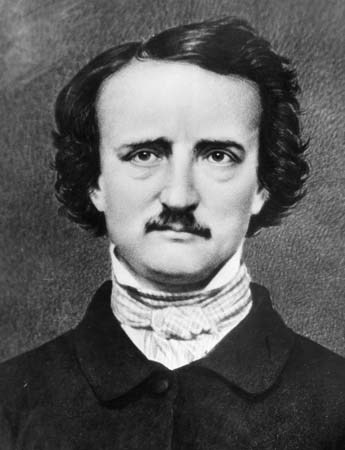
Authors can look gloomy when their books don't sell.
What was Edgar Allan Poe's only bestseller during his lifetime?
1. The Narrative of Arthur Gordon Pym of Nantucket, a sea adventure and his only novel.
2. The Conchologist's First Book, a textbook.
3. The Balloon Hoax, an account of an astounding trans-Atlantic balloon trip.
4. Tales of the Grotesque and Arabesque, a collection of his stories, in which "terror has been the thesis."
And the answer is
The Conchologist's First Book: Or a System...
September 23, 2010
Sunflower, Say Hello to Mama

An early ancestor of sunflowers, daisies (Science/AAAS)
It looks like a hand-painted image miraculously preserved on a fresco in Pompeii. In fact, Science reports today, it's a 47-million-year- old ancestor of many of our most familiar flowers (and of that lettuce you're pushing around on your plate right now). Here's the press release:
An exquisite fossil flower that is an ancient relative of daisies and sunflowers suggests that this group of plants arose about 50 million years ago...
September 21, 2010
The Megalopolitan Parrot
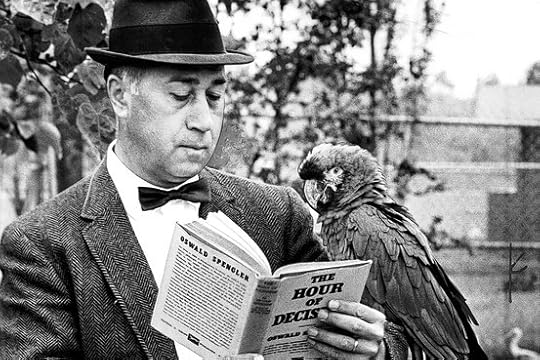
Polishing Pedro's vocabularly
Today's Wall Street Journal eulogizes an eccentric Des Moines zookeeper named Bob Elgin. I liked this part:
When Pedro, the zoo's macaw, became notorious for spouting profanity it learned from workmen at the zoo, Mr. Elgin gave him a cleaned-up vocabulary by reading to him from Oswald Spengler's "Decline of the West."
"He's the most erudite parrot in the world," including words like transcendental and megalopolitan, Mr. Elgin boasted in an article...

